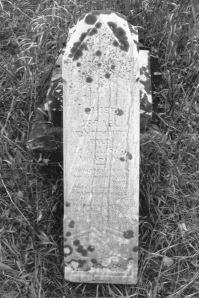Every article in South Dakota History comes with its own puzzles to solve and decisions to make. Curtis A. Dahlin’s article in the upcoming Winter 2012 issue presented an interesting choice. In his article, “Stories in Stone: The Final Resting Places of Dakota War Participants on the Sisseton-Wahpeton Indian Reservation,” Dahlin takes readers on a tour of nine cemeteries in northeastern South Dakota containing the graves of individuals who played roles in the United States-Dakota War of 1862. All of these Sisseton, Wahpeton, or mixed-blood men and women had acted on behalf of those who desired a negotiated peace, many of them placing themselves at risk to aid others in fleeing the violence that erupted in Minnesota in August of 1862. They went on to settle in the wooded coulees of the Sisseton-Wahpeton, or Lake Traverse, Indian Reservation, created in 1867, and to live out their lives there.
In his article, Dahlin presents a brief biography and an account of each individual’s role in the Dakota War, along with a photograph of his or her gravestone. The stories truly transform each grave marker from a mere block of stone into a memorial. In effect, the gravestones come to life, hinting that there is much more to be learned. Dahlin’s article, we thought, was especially well suited to include in the journal’s annual historic preservation issue.
In looking at the sources the author used in compiling his information, we came across photographs of a number of the people whose gravestones are pictured, taken around the time of the events that played such a pivotal role in so many lives. They are young, handsome, and dressed in traditional or period clothing. It was tempting to search for an image of each one to pair with the photograph of his or her gravestone. In the end, though, we stayed with the author’s approach and kept the focus on the gravestones themselves. Perhaps these “stones with stories” will inspire readers to look at some of the sources Curt Dahlin consulted writing his article to discover more about the real people they memorialize.
JKO

